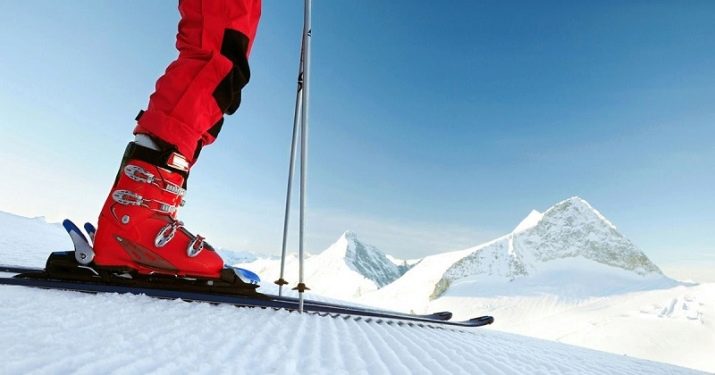What ski poles are there and how to choose them?
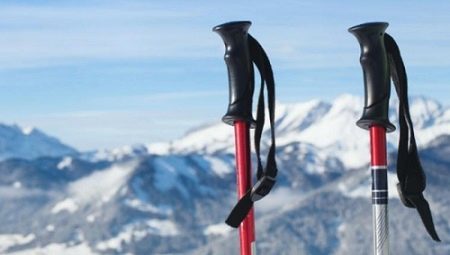
Poles for alpine skiing are an important component of a skier's outfit. The correct selection of this element will further affect the technique of the skier.
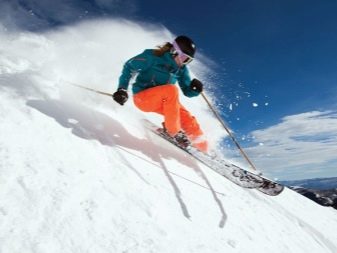
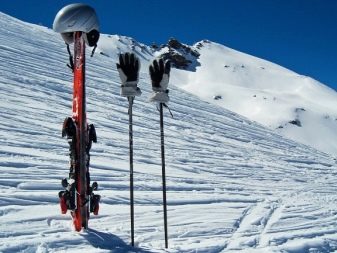
Design features and purpose
Poles for alpine skiing are indispensable helpers for an athlete. Their main task can be called maintaining the correct stance of the skater, as well as his balance and balance. Ski poles help accelerate during the start or descent, and also provide the opportunity to push and accelerate on a flat surface. By the way, for this purpose, even some seasoned snowboarders keep folding poles with them during the descent. In emergency situations, it is the rods that cope with providing support.
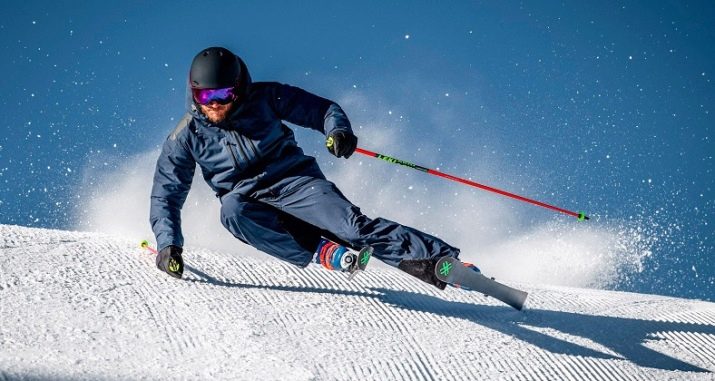
This is especially important for beginners. We must not forget that this piece of equipment, in conjunction with the proper position of the hands, contributes to the comfortable performance of turns, that is, the most significant elements of ski equipment.
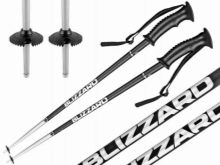
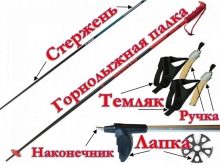

Alpine ski poles have several key parts. A handle, or a handle made of plastic, cork or rubber, has different shapes. Its purpose is to provide reliable grip of the skater's hand with an item of equipment without slipping and comfort during operation.
For manufacturers of ski poles, it is the handle that is the area in which it is possible to experiment with the design, and therefore, to stand out from the competitors.

The next part of the item, the lanyard, is created from leather or nylon material. Its main task is to protect the skier from losing the stick.Currently, models are produced with detachable lanyards, which, with a strong load on the hand and the likelihood of damage, detach from the base.
As a replacement for the lanyard, today you can also use a special glove with a loop, with which it becomes one with the base. Freeriders increasingly prefer sticks with a plastic lanyard, which is an integral part of the handle.
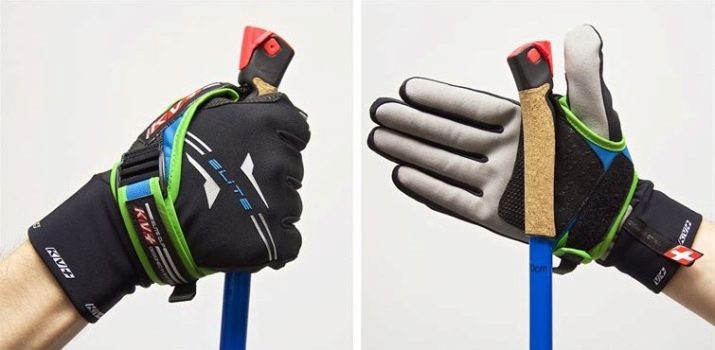
When buying inventory, it is important to pay attention to its rings. Oversized ones are designed for moving on loose deep snow or flat surfaces, and small ones - for driving on special tracks with hard snow. The main function of the part is to prevent the rods from sinking into the surface during immersion. At the moment, rings of various shapes, sizes and materials of manufacture are presented on the market.
A ski pole without this part is practically useless.
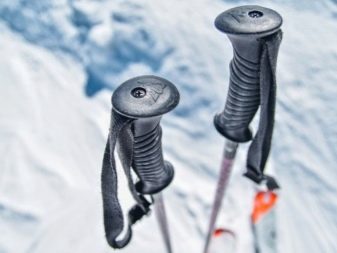
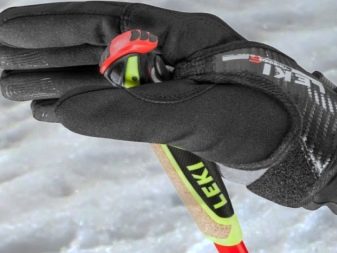
The tip of the equipment element can be tapered, serrated, or have the form of an inverse cone. Those models that outwardly resemble toothed crowns are recommended for operation on icy roads. The rod (aka the shaft) is the base on which all other parts are fixed.
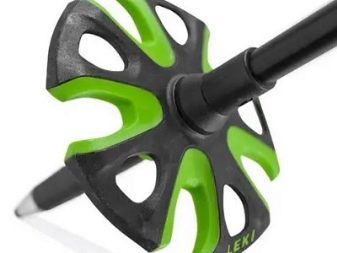
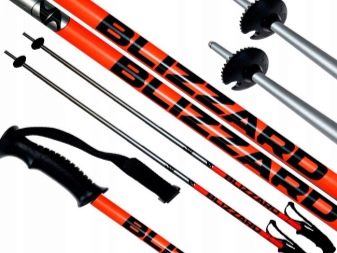
It is created either from a solid or from a composite tube. The rigidity of the part is measured in arbitrary units. An indicator of up to 5 units is recommended for beginners and amateurs, equal to 5 units for experts, and more than 6 units for professionals. The telescopic rod is formed from 2 or 3 bends. Some models are additionally equipped with an internal rope, which allows them to quickly acquire a working condition.
It is worth mentioning that there are various plastic attachments (guards) that ensure the safety of hands from touching the gates or poles while overcoming the equipped tracks. A model with a redster handle for slalom protection is also available.
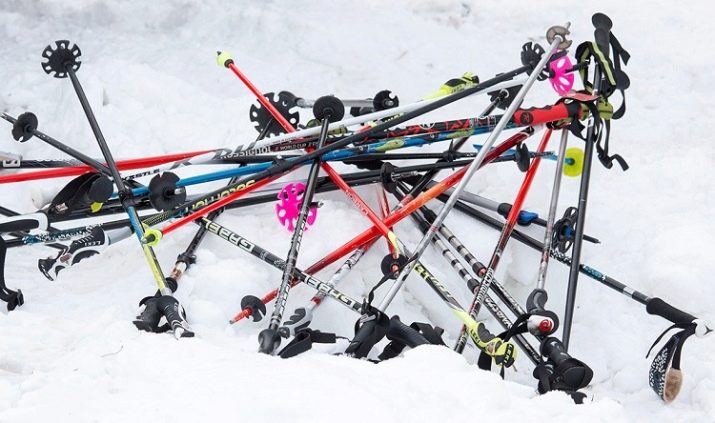
Manufacturing materials
Aluminum is the most common and also the cheapest material for the production of ski poles. It is used, of course, not in its pure form, but with impurities of other metals. Its big advantage is that aluminum does not break when overloaded, but first folds in half or simply bends. Such models are usually purchased by novice athletes who do not have special requirements.
Composite sticks include those that are made on the basis of carbon fiber, carbon fiber, bamboo, graphite and their alloys. They are more expensive than aluminum ones and weigh less. The main disadvantage of the material is called instant delamination or even breaking of the sticks into two parts upon impact.
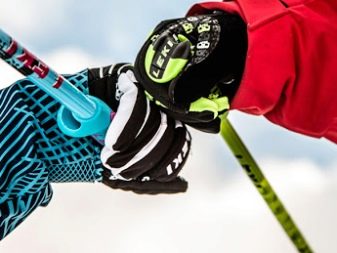

Fiberglass elements deteriorate at the slightest cut, although they show high resistance to aggressive media. Models made of expensive carbon fiber are stronger, but lighter than aluminum ones. The production of bamboo equipment does not harm the environment. In addition, this material is considered to be even stronger than aluminum. Equipment manufacturing is usually done by hand.
It is customary to design the tips of ski poles from hard alloys, for example, steel. In expensive samples, there are also parts made of tungsten carbide and other strong joints.
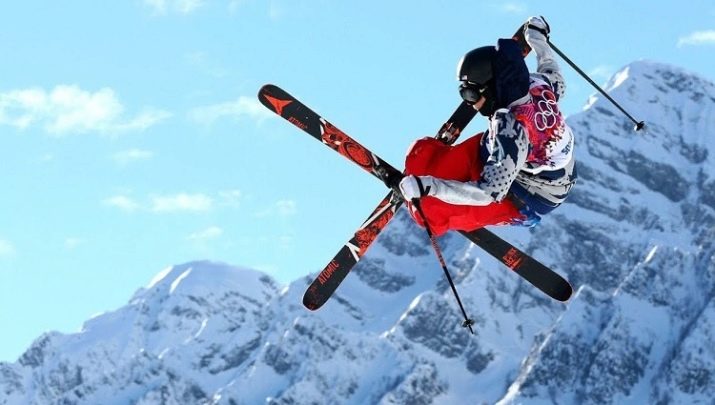
Views
As mentioned above, ski poles are divided into telescopic and solid ones. The two-knees are bent in half, and the three-knees are divided into three fragments. The latter, respectively, are more compact and suitable for transportation in a backpack. The cable, passed through the tubes of the poles, makes it possible to collect them into the operational position in a couple of moments.

Sports
Poles for sports are made of the highest quality materials. Some of them are also made curves: for example, giant slalom and super giant require medium-curved models, and rapid descent - with maximum curvature. The curvature of the equipment improves the athlete's aerodynamics and prevents the goal from getting caught. The core of a number of sports models has a triangular cut, which provides a reduction in weight and an increase in strength.

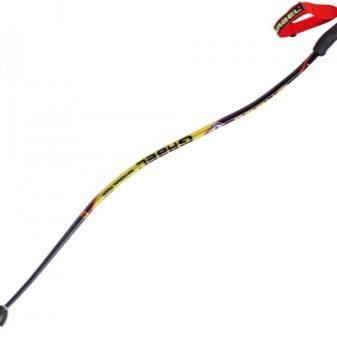
Park
In parks, skiers usually practice ski jumping, sliding on structures and performing tricks. Sticks for all these tasks should be significantly shortened and lightweight. The main task of the equipment element is to maintain balance and simplify riding in the back stance.
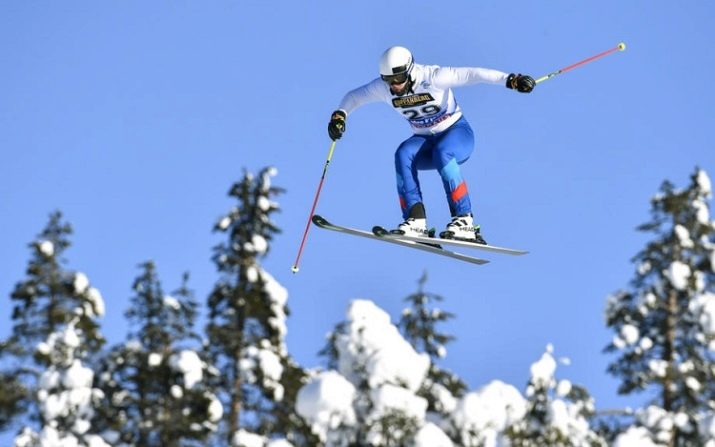
Piste
For amateur skiing on the tracks, as well as walking, they create models made of aluminum or carbon. The former are stronger and more inexpensive, while the latter are more flexible and therefore recoverable.
By the way, it is worth mentioning the flask-stick, which allows pouring about 75 milliliters of drinks inside each pen.
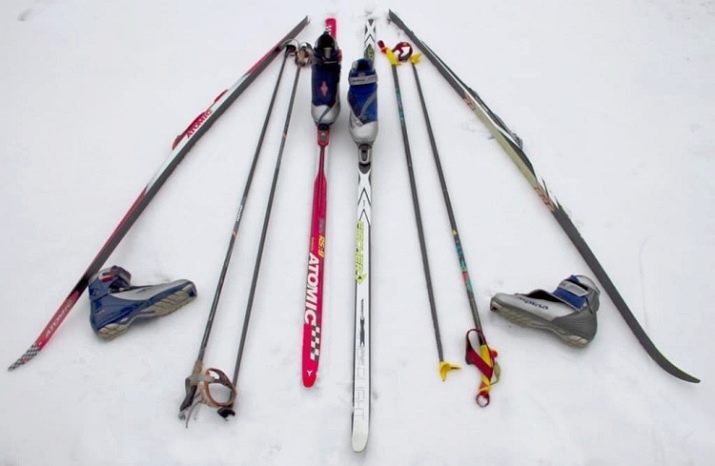
Off-piste
Freeride or off-piste skiing requires the use of equipment with large rings that prevent you from "drowning" in the snow. Also, athletes prefer to arm themselves with adjustable telescopic poles that help them climb to the top. For a steep slope, the poles are shortened, for a gentle relief they are lengthened, and the descents are performed with a standard length.

Top manufacturers
The German company Leki belongs to the best manufacturers of ski poles. She was the first to introduce fiberglass models and an innovative automatic strap release system to the market. The brand's assortment includes basic models made of aluminum, telescopic rods with a clip-folding system, and a Shark Trigger strap that automatically tightens when you press a special button.
The Austrian company Atomic uses only environmentally friendly raw materials in production. The wide range of the brand includes models suitable for both beginners and professional athletes. Komperdell Schnapsstock (Austria) is known as one of the largest suppliers to the World Championships. Among the large number of models presented, you can find a flask stick with a 200 ml tank and a special funnel. Ski enthusiasts can also turn their attention to the products of the Russian company Stayer, the domestic STC AVANTI RS and the Norwegian Swix Carbon.
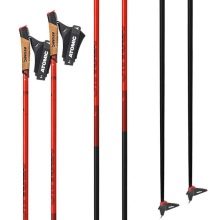

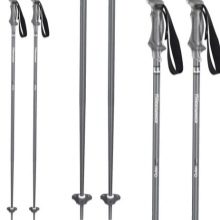
How to choose?
In order to choose the right ski poles, several factors must be taken into account. First of all, it is worth talking about the length of the rods: its selection should be carried out in accordance with the height of the skier. It should be borne in mind that this indicator is indicated in increments of 5 centimeters, that is, it is 120, 125 or 130 centimeters.
Too long models force you to ride in the back stance, and too short, respectively, lean forward strongly and lose some of the support. As a result, the legs get tired faster and the ski handling becomes worse. Regardless of riding style and skill level, it is important that the upper body is calm and the stance is balanced.

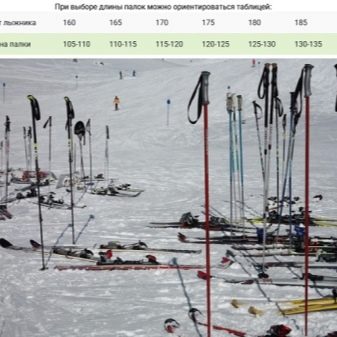
Ski poles must be chosen in such a way that their length corresponds to the height of the athlete, from whom 50 centimeters have been subtracted. After calculations, the resulting size must be checked by putting on ski boots, slightly bending your knees and holding the sticks in your hands: the elbow joint should form a right angle.
Another selection scheme is to multiply your height by 0.7. By the way, the riding technique should also be taken into account: for example, an aggressive style requires a lower stance and short sticks. Sticks up to 110 centimeters are considered for children, and an adult is recommended to use samples above 110 centimeters.
It should also be mentioned that curved sticks, as well as telescopic ones that change the length, are intended for professional sports. For beginners, it is best to use simple straight rods that give swing, but do not touch the snow.
